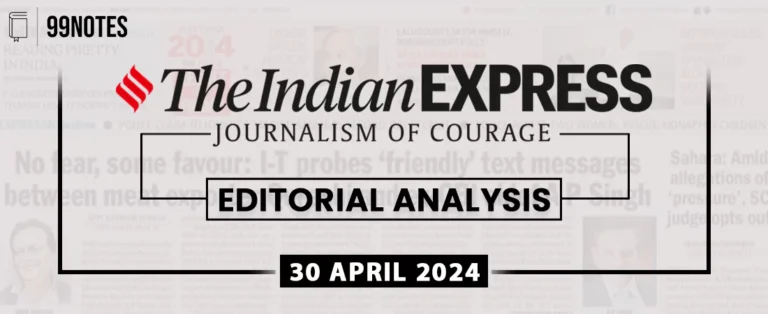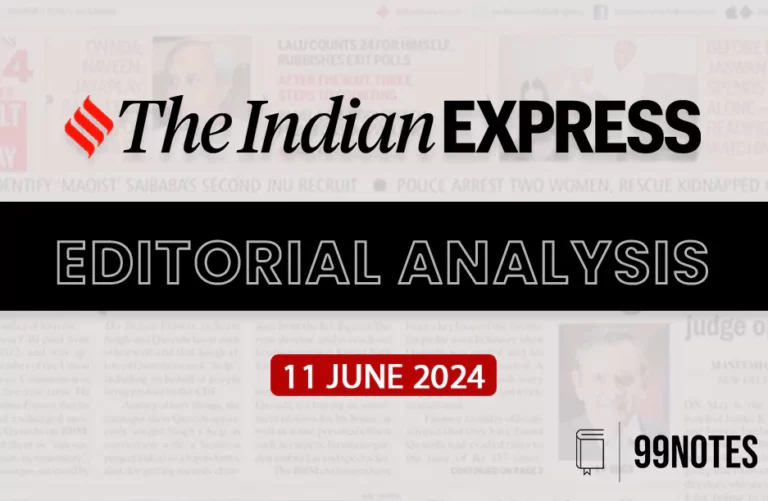23 Feb 2024 : Indian Express Editorial Analysis
Indian Express Editorial Analysis
23-February-2024
1. A long institutional road
| Topic: GS2 – Polity – Judiciary This topic is relevant for both Prelims and Mains in the context of knowing facts about the role of the Supreme Court within the constitutional framework, recent judicial decisions, and their implications for democracy and governance. |
| Context: |
|
Balancing Institutional Legitimacy:
- The Supreme Court, like any institution, must balance its actions to maintain its legitimacy while also fulfilling its constitutional duties.
- The Court often treads cautiously to avoid antagonizing the executive branch, as its own legitimacy is intertwined with maintaining a delicate balance of power.
- Even when the Court rules against the government, it may not challenge the core ideological projects of the ruling party.
- Therefore, while decisions like those on electoral bonds and the Chandigarh mayoral race are commendable, they may not signal a fundamental shift in the Court’s relationship with the executive.
Maintaining the Façade of Legitimacy:
- In some cases, the Court’s intervention serves to remind the executive of the need to maintain the façade of legitimacy, particularly concerning democratic principles and constitutional norms.
- Decisions such as those related to electoral integrity or egregious violations of constitutional principles highlight the boundaries that even a brazen executive cannot cross without risking legitimacy.
- However, the broader political culture’s response to such decisions indicates a normalization of institutional perfidy, where even significant breaches do not necessarily lead to political consequences for the ruling party.
Challenges to Systemic Regeneration:
- Despite occasional positive rulings, skepticism remains regarding the Court’s ability to foster systemic regeneration.
- The Court’s historical acquiescence to the executive’s agenda and the broader political culture’s acceptance of institutional degradation undermine hopes for significant change.
- The fragmented opposition and the lack of consistent civic courage contribute to the normalization of institutional breaches, eroding expectations of accountability.
Conclusion:
- While the recent decisions by the Supreme Court are welcome, they should not be seen as isolated instances of legitimizing the façade of constitutionalism.
- Instead, they need to be part of a broader pattern challenging authoritarianism and communalism wherever they manifest.
- In the absence of sustained efforts to hold the government accountable and restore institutional integrity, the significance of individual judicial interventions remains limited.
| PYQ: Starting from inventing the ‘basic structure’ doctrine, the judiciary has played a highly proactive role in ensuring that India develops into a thriving democracy. In light of the statement, evaluate the role played by judicial activism in achieving the ideals of democracy. (200 words/12.5m) (UPSC CSE (M) GS-2 2014) |
| Practice Question: Critically analyze the recent decisions by the Supreme Court of India, particularly the declaration of the electoral bonds scheme as unconstitutional and the pronouncement of the winner in the Chandigarh mayoral race. Evaluate the significance of these decisions in upholding democratic principles amidst challenges of institutional degradation. (250 words/15 m) |
2. How to make MSP work
| Topic: GS3 – Agriculture – MSP This topic is relevant for both Prelims and Mains in the context of knowing facts about agricultural pricing policies, particularly the Minimum Support Price (MSP) system. |
| Context: |
|
Reasons for Focus on MSP:
- The focus on MSP stems from several factors, including inefficient and poorly competitive markets, the failure of markets to adapt to the changing needs of the agricultural sector, neglect of non-price factors affecting productivity and income, and the direct impact of prices on farmers’ income.
- These issues have fueled demands for reforms aimed at ensuring fair remuneration for farmers and addressing agrarian distress.
Evolution of MSP Implementation:
- Initially, MSP implementation was limited to a few states and a select set of crops, notably paddy, wheat, and cotton.
- However, concerns over stagnating agricultural income, unfavorable terms of trade, and rising farmer suicides prompted attention towards the need for remunerative pricing policies.
- The recommendations of the National Commission on Farmers, led by the Swaminathan Panel, emphasized reforms in agricultural markets, contract farming, and land reform, among others.
- Particularly noteworthy was the recommendation that MSP should be at least 50 percent higher than the weighted average cost of production.
Challenges with New MSP Concept:
- The introduction of the “new MSP” concept, as proposed by the Swaminathan Panel, mandated a minimum of 50 percent margin over the comprehensive cost (C2) of production.
- However, this approach raised concerns regarding its sustainability and impact on market dynamics.
- By fixating on cost C2 and imposing a fixed margin, the new MSP may distort market signals and discourage demand-driven growth in agriculture.
Policy Options and Recommendations:
- Various policy options, including legal guarantees for MSP, deficiency price payment systems, and assured prices to farmers, have been proposed to address pricing challenges.
- However, each option presents its own set of complexities and trade-offs.
- For instance, legalizing MSP may not ensure effective implementation or address market distortions.
- Similarly, deficiency price payment systems may face fiscal constraints and WTO challenges if not properly designed.
Conclusion:
- To address the challenges surrounding MSP effectively, a balanced approach is necessary.
- This involves revisiting the MSP formula to incorporate variable margins and exploring alternative pricing mechanisms, such as Assured Price to Farmers (APF), which includes a component for farmer margin or profit.
- Additionally, there is a need for greater coordination between the central and state governments to ensure the effective implementation of MSP across different crops and regions.
- Ultimately, a comprehensive set of reforms is required to enable markets to provide remunerative prices to farmers and reduce their dependence on government intervention.
| Various Committees on Minimum Support Price (MSP) |
|
| PYQ: Consider the following stements: (2020) 1) In the case of all cereals, pulses and oil-seeds, the procurement at Minimum Support Price (MSP) is unlimited in any State/UT of India. 2) In the case of cereals and pulses, the MSP is fixed in any State/UT at a level to which the market price will never rise. Which of the statements given above is/are correct? (a) 1 only (b) 2 only (c) Both 1 and 2 (d) Neither 1 nor 2 Ans: D |
| Practice Question: Critically analyze the challenges and implications of the Minimum Support Price (MSP) system in India, with a focus on recent reforms and policy options. Discuss the evolution of MSP implementation since its inception in 1965 and evaluate its effectiveness in addressing agrarian distress and ensuring remunerative prices for farmers. (250 words/15 m) |
For Enquiry

23 Feb 2024 : Indian Express Editorial Analysis

Annexation of Sindh & Punjab by British- Complete Notes for UPSC
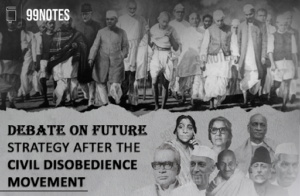
Debate on future strategy after Civil Disobedience Movement
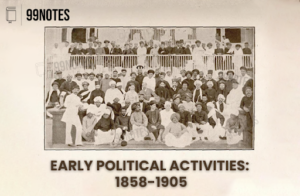
Early Political Activities: 1858-1905 [Complete Notes for UPSC]

Peasant Movements in India- Complete Notes for UPSC
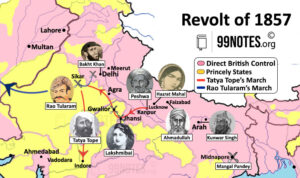
Revolt of 1857

Economic Impact of British Rule in India- Complete Notes for UPSC

Revolutionary Nationalism 2.0

Revolutionary Movement in India
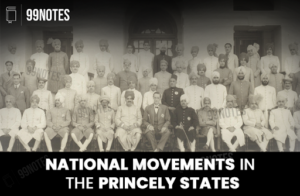
National Movements in the Princely States
Indian Express 23 Feb 2024 : Indian Express Editorial Analysis Indian Express Editorial Analysis
23-February-2024
1. A long institutional road
Topic: GS2 – Polity…
Modern India Annexation of Sindh & Punjab by British- Complete Notes for UPSC Annexation of Sindh & Punjab by British
By 1818, the entire Indian subcontinent, except Punjab and…
Modern India Debate on future strategy after Civil Disobedience Movement Debate on future strategy after civil Disobedience movement
In the Aftermath of the withdrawal of the…
Modern India Early Political Activities: 1858-1905 [Complete Notes for UPSC] Early Political Activities: 1858-1905
The revolt of 1857 was the first major large-scale revolt against…
Modern India Peasant Movements in India- Complete Notes for UPSC Peasant Movements in India
Peasant movements in India have been pivotal in shaping the socio-political…
Modern India Revolt of 1857 The Revolt of 1857 was one of the most significant watershed moments during British rule. During this…
Modern India Economic Impact of British Rule in India- Complete Notes for UPSC Economic Impact of British Rule in India
The British Empire in India was highly organized administratively….
Modern India Revolutionary Nationalism 2.0 Revolutionary Nationalism 2.0
Revolutionary Nationalism 2.0 in India marks a pivotal shift towards radical…
Modern India Revolutionary Movement in India The First Phase of the Revolutionary Movement in India (1907-17)
With the decline of the mass phase of…
Modern India National Movements in the Princely States National Movements in Princely States
National movements in princely states of British India were the…

